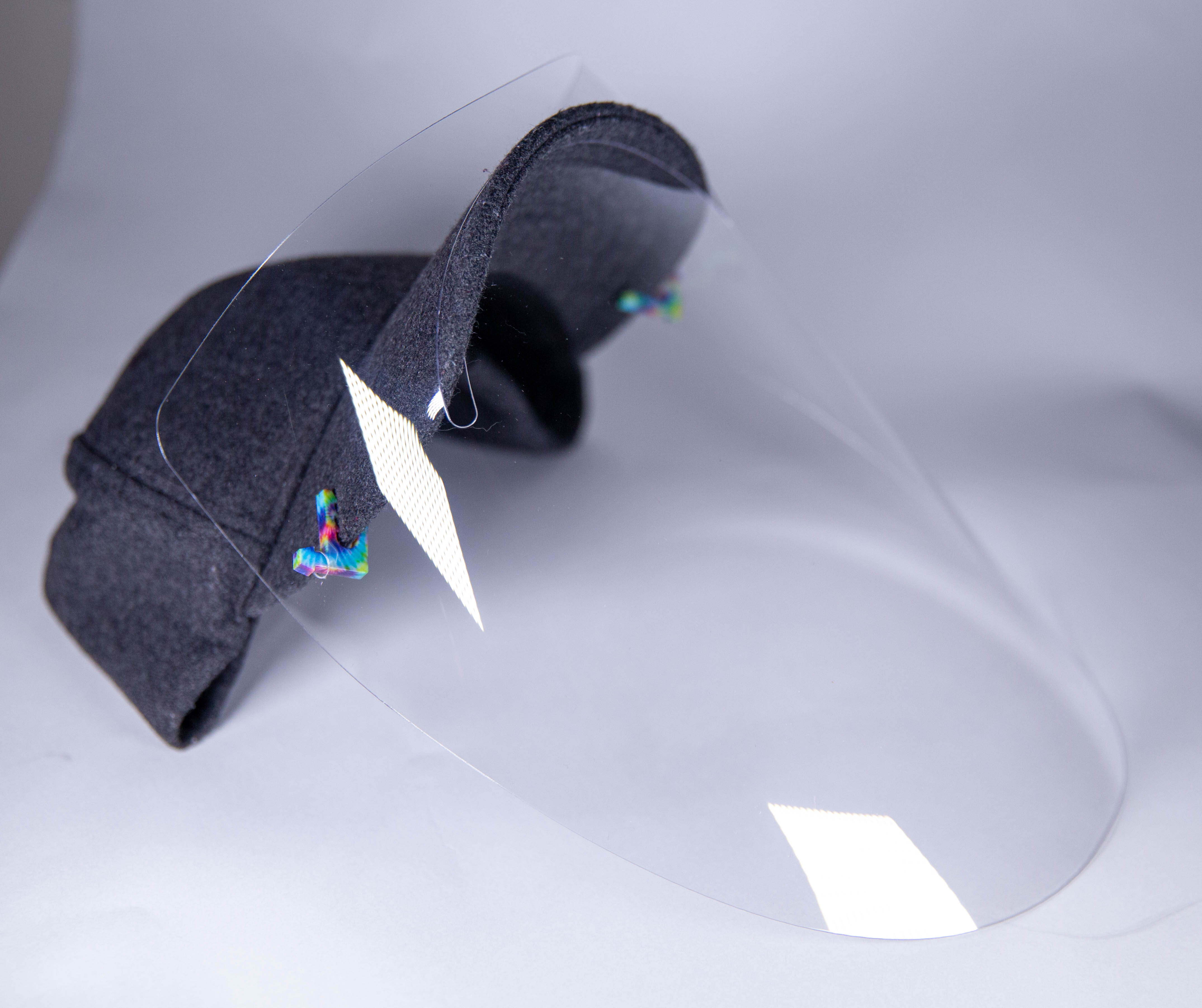Baseball cap face shield (Spring 2021)
Summary
As a teaching assistant (TA), I was tasked with leading the design and fabrication of face shields for ~250 students and staff. The shield needed to be shop-safe. Additionally, it had to be comfortable enough for students to wear during a weekly 3-hour lab section.
Key Skills
- Rapid prototyping - 3D printing (FDM, PolyJet) and laser cutting
- Materials selection
- Design process - idea generation to manufacturing

Problem
I first designed a shield for students in 2.s009 (Product Design Processes) in Fall of 2020. As one of only a handful of in-person classes on campus that semester, there were significant health and safety concerns due to COVID-19. After testing a wide variety of commercially available shields, we found that our unique needs were not served by existing choices. Inspired by one of the designs we tested, we wanted to include the ability to flip the shield up on top of the head when not in use. The shield was attached to a baseball cap that included the logo of each team; thus, the shield became a piece class "swag" that students were excited to receive.
Design Objectives
- Protect wearer from transmission of COVID-19
- Comfortable enough to wear for several hours at a time
- Shield could be easily "disengaged" to see something closely or engage in distanced conversation
- Incorporate custom hat that made PPE feel personal
Process
The shield showcased here was a re-design of the shield I had designed and made in the pervious semester. The functional requirements were similar
for this class, 2.00b (Toy Product Design), in Spring 2021. It was found that the ability to flip the shield up was not valued as much as we expected.
There were also some periodic maintainence required because the attachment between the shield and hat (chosen for it's rotational ability) was prone to breaking.
This re-design was studier (less floppy and lighter shield) and easier to maintain (3D-printed clips).
I first CAD'ed the clip based on a simliar design I found posted open source (the orientation of the clip changed for our needs). The dimensions were
first fine tuned using an FDM printer (for speed and low cost). The dimensions were then further refined with the final printer.
I was able to utilize a PolyJet J55 printer for a polished and colorful final clip.
I undertook a similar process for the laser-cut shield. The initial shape was mimicked from existing shields, then refined until
those testing the shield found it to be large enough to feel COVID-safe and small enough to not hinder movement.
For the re-design, the overall shape was made smaller to create a lighter and studier shield.
PET-G was chosen as the shield material because it is shatter-resistant (important for shop safety).
The particular thickness was chosen to create a shield that was flexible enough to bend but not so thin so as to feel flimsy.
Once a full prototype was assembled, other TA's served as testers.

Results
Ultimately, with the help of the other class TA's, more than 120 face shields and clips were manufactured and distributed to students and teaching staff (during each semester).